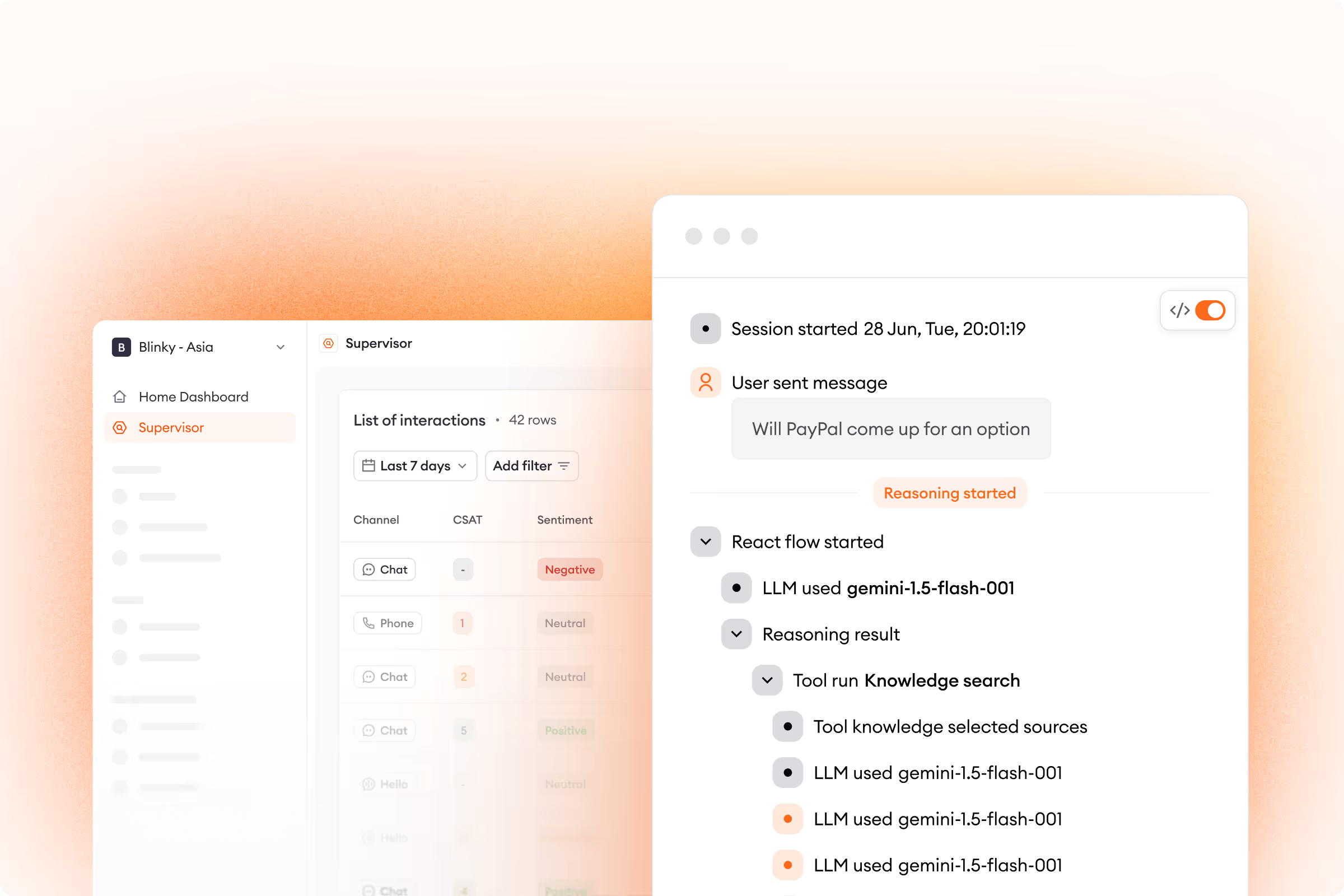As you start looking into ways to level up your customer service, you’re bound to stumble upon several possible solutions.
Chatbots? A fine choice.
Conversational AI? Another winner.
But once you dig a little deeper, all the buzzwords might blend together, and you’ll wind up asking yourself:
What’s the difference between a chatbot and conversational AI?
A chatbot and conversational AI can both elevate your customer experience, but there are some fundamental differences between the two.
Don’t let the technobabble get to you — here’s everything you need to know in the chatbots vs. conversational AI discussion.
What’s the difference between a chatbot and conversational AI?
The short answer: chatbots are a specific type of conversational AI.
A chatbot is a computer program that simulates human conversation. Chatbots have various applications, but in customer support, they often act as virtual assistants to answer customer FAQs.
Conversational artificial intelligence (AI), on the other hand, is a broader term for any AI technology that helps computers mimic human interactions. A chatbot is an example of conversational AI that uses a chat widget as its conversational interface, but there are other types of conversational AI as well, like voice assistants.
Feeling overwhelmed by all the AI abbreviations? Bookmark Zowie’s AI Dictionary to stay on top of the latest tech terms and shortcuts.
What is a chatbot?
There are 3 main types of chatbots in use today:
- Menu-based chatbots use a decision-tree flow to offer users a limited number of choices they can click on. These basic chatbots don’t let people type their own questions, so the resulting user experience is extremely rigid.
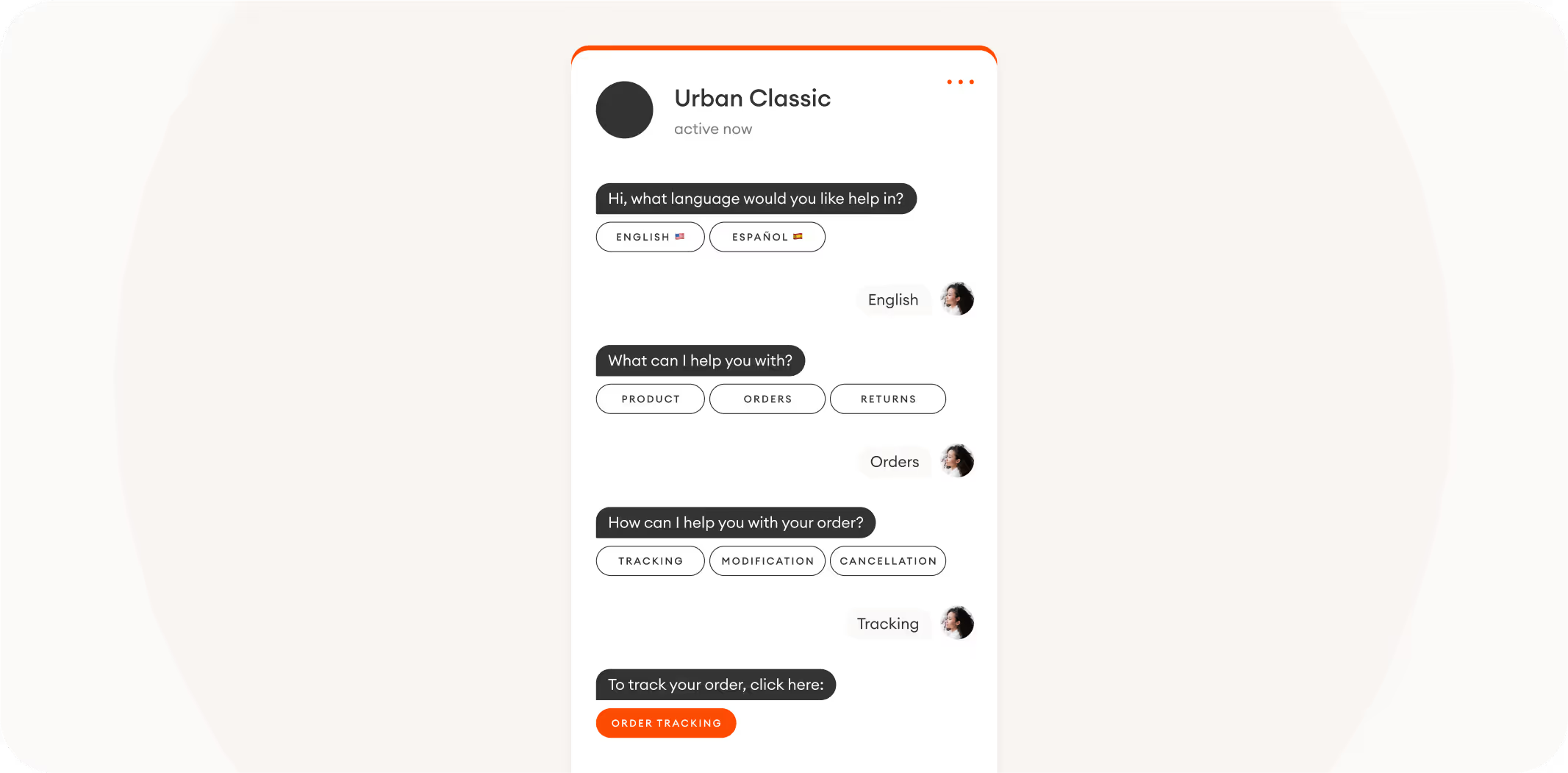
- Keyword-based chatbots allow users to type their own questions, but they only provide correct answers if these questions include specific keywords that they’ve already been trained on. The conversational flow is slightly improved, but there’s still a high chance keyword chatbots won’t understand a given request — especially if typos or foreign languages are present.

- AI chatbots use machine learning algorithms to understand human language and recreate natural conversations. Unlike the other types of chatbots (which are collectively known as rule-based chatbots), AI solutions can recognize conversational patterns and interpret user input. This allows top AI chatbots to deliver truly human-like responses.
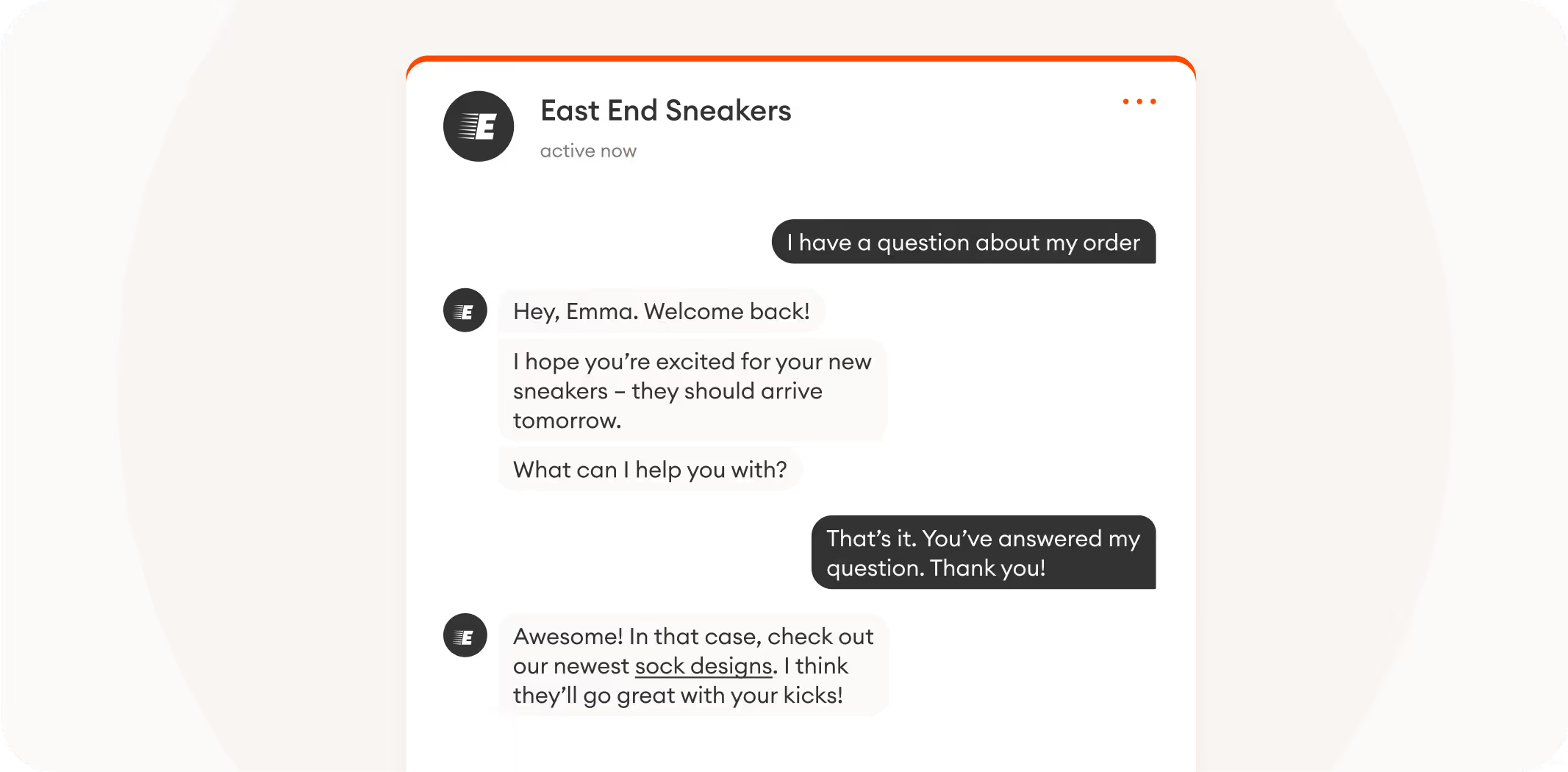
For more info on the different kinds of chatbots, the pros and cons of each, and how you can find the best solution for your business, check out our free ebook, Finding the Right Customer Service Automation Software.
Top chatbot benefits
Chatbots can provide numerous benefits to any customer support team:
- Relief for your human agents: Chatbots can answer a business’s most repetitive customer queries with remarkable effectiveness. Leading automation solutions are able to fully resolve over 70% of all support tickets and can handle all sorts of complicated workflows.
- Increased customer satisfaction: Customers are typically happier interacting with a virtual agent than with a human support rep over live chat. The satisfaction rate for chatbots exceeds 87%, showing these tools can consistently address customer concerns.
- Higher customer engagement: Chatbots offer instant answers to customer questions with 24/7 availability—something human teams can rarely achieve. These tools can deliver personalized, omnichannel, real-time responses that can keep shoppers engaged at multiple stages of their customer journey.
To see all the ways chatbots are transforming customer service, check out our blog post, 10 Ways Customer Support Chatbots Are Redefining Excellent Service.
What is conversational AI?
Conversational AI is a general name that describes any technology that detects and responds to human inputs, whether they come in via text or speech.
Conversational AI is trained on large datasets that help deep learning algorithms better understand user intents. And thanks to natural language processing (NLP), conversational AI platforms can interpret human language to an extremely high degree, going so far as recognizing whether a customer is frustrated or simply trying to complete a purchase.
Sounds similar to a chatbot? That’s because it is — chatbots are one example of conversational AI.
In the strictest sense, chatbots only operate within a chat widget, yet AI functionalities can be present in a variety of other conversational interfaces.
Virtual assistants that rely on voice, like Apple’s Siri or Amazon’s Alexa, are other examples of conversational AI. Likewise, conversational AI is also a more suitable term for conversational apps that operate over SMS or social media and don’t fit the mold of traditional chatbots.

Why is conversational AI so important? The market for this technology is already worth $10.7B and is expected to grow 3x by 2028. As more businesses embrace conversational AI, those that don’t risk falling behind — 67% of companies believe they’ll lose customers if they don’t adopt it soon.
Chatbots vs conversational AI: 3 main differences
To simplify these nuanced distinctions, here’s a list of the 3 primary differentiators between chatbots and conversational AI.
- Chatbots are mainly text-based, but voice assistants and tools that can interpret more diverse human inputs are classified as conversational AI applications.
- Not all chatbots use conversational AI technology — rule-based bots are not AI bots. Chatbots that aren’t equipped with natural language understanding (NLU) won’t be capable of delivering conversational responses because they can only respond with predefined scripts.
- A chatbot is a specific tool, while conversational AI is an umbrella term for the technology that powers AI chatbots. For example, Zowie is a chatbot, but it’s built using conversational AI technology.
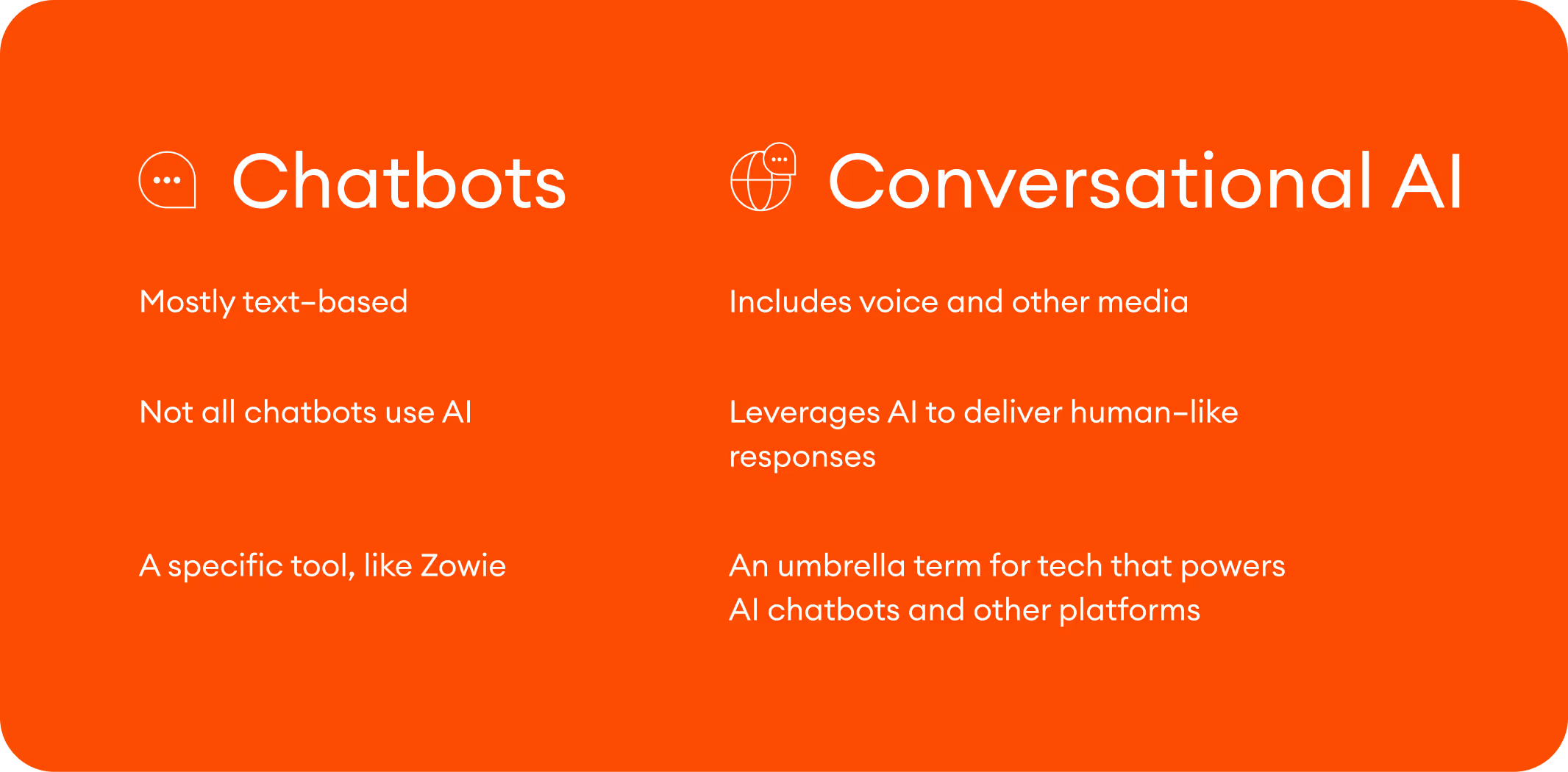
Conversational AI chatbot use case: ChatGPT
A popular example of a conversational AI chatbot is ChatGPT. It’s important to know that the conversational AI that it’s built on is what enables those human-like user interactions we’re all familiar with.
ChatGPT is trained off of a large language model (LLM) called GPT-4. To form the chatbot’s answers, GPT-4 was fed data from several internet sources, including Wikipedia, news articles, and scientific journals. This intensive learning is what separates ChatGPT from most chatbots. Its conversational AI is able to refine its responses — learning from billions of pieces of information and interactions — resulting in natural, fluid conversations.
So while the chatbot is what we use, the underlying conversational AI is what’s really responsible for the conversational experiences ChatGPT is known for.
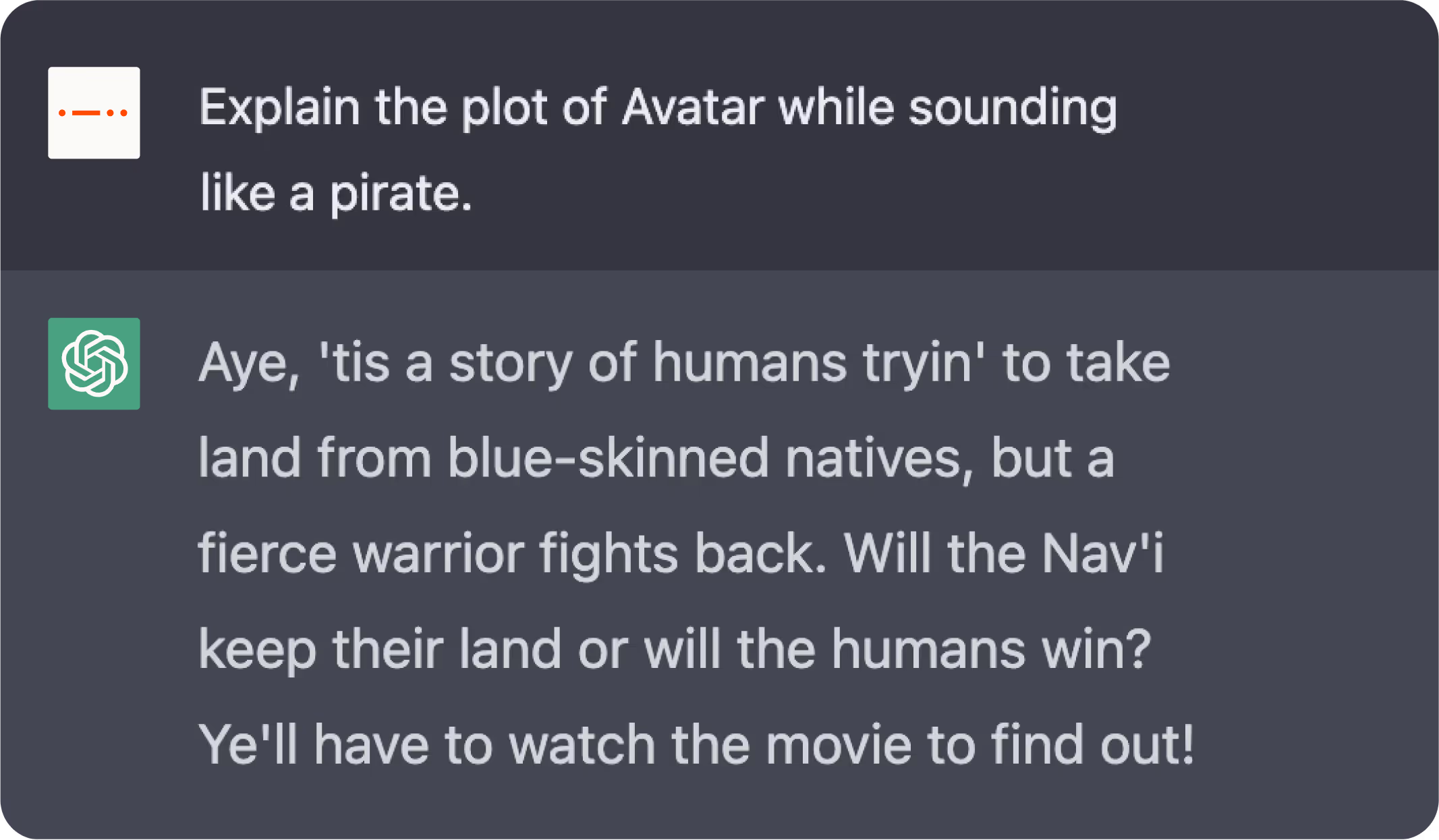
Conversational AI chatbot solutions
Chatbots that leverage conversational AI are effective tools for solving a number of the biggest problems in customer service. Companies from fields as diverse as ecommerce and healthcare are using them to assist agents, boost customer satisfaction, and streamline their help desk.
Zowie is the most powerful customer service conversational AI solution available. Built for brands who want to maximize efficiency and generate revenue growth, Zowie harnesses the power of conversational AI to instantly cut a company’s support tickets by 50%.
But it doesn’t stop there. Zowie seamlessly integrates into any tech stack, ensuring the chatbot is up and running in minutes with no manual training. And Zowie’s AI lets companies deliver personalized responses that fit their brand with minimal upkeep.

.avif)


